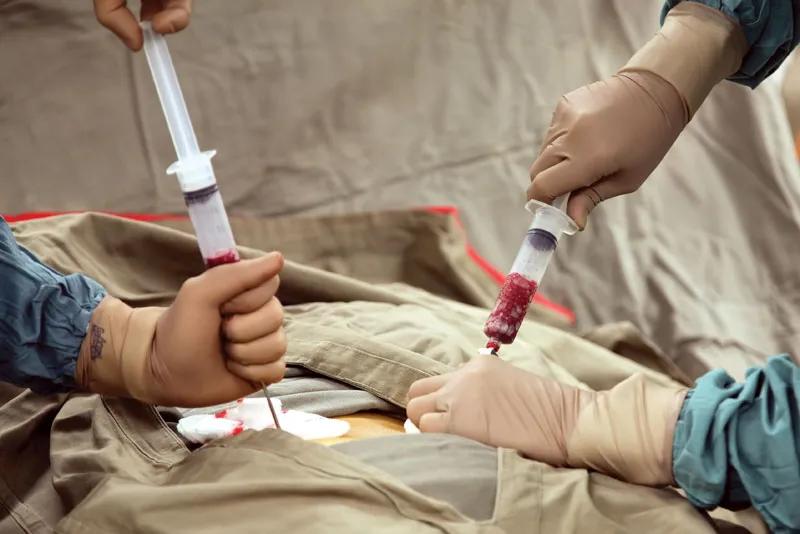Why it's done?
Bone marrow biopsy and bone marrow aspiration are procedures to collect and examine bone marrow — the spongy tissue inside some of your larger bones.
Bone marrow biopsy and aspiration can show whether your bone marrow is healthy and making normal amounts of blood cells. Doctors use these procedures to diagnose and monitor blood and marrow diseases, including some cancers, as well as fevers of unknown origin.
Bone marrow has a fluid portion and a more solid portion. In bone marrow biopsy, your doctor uses a needle to withdraw a sample of the solid portion. In bone marrow aspiration, a needle is used to withdraw a sample of the fluid portion.
Bone marrow biopsy and bone marrow aspiration are often done at the same time. Together, these procedures may be called a bone marrow exam.
Bone marrow biopsy and bone marrow aspiration offer detailed information about the condition of your bone marrow and blood cells.
Your doctor may order a bone marrow exam if blood tests are abnormal or don't provide enough information about a suspected problem.
Your doctor may perform a bone marrow exam to:
- Diagnose a disease or condition involving the bone marrow or blood cells
- Determine the stage or progression of a disease
- Check iron levels and metabolism
- Pseudomyxoma peritonei.
- Monitor treatment of a disease
- Investigate a fever of unknown origin
Bone marrow biopsy and aspiration may be used for many conditions. These include:
Anemia
Blood cell conditions in which too few or too many of certain types of blood cells are produced, such as leukopenia, leukocytosis, thrombocytopenia, thrombocytosis, pancytopenia and polycythemia
Cancers of the blood or bone marrow, including leukemias, lymphomas and multiple myeloma
Cancers that have spread from another area, such as breast, into the bone marrow
- Hemochromatosis
- Fevers of unknown origin
- A bone marrow biopsy and a bone marrow aspiration offer different, but complementary, information about your bone marrow cells. The two procedures are usually performed together.

